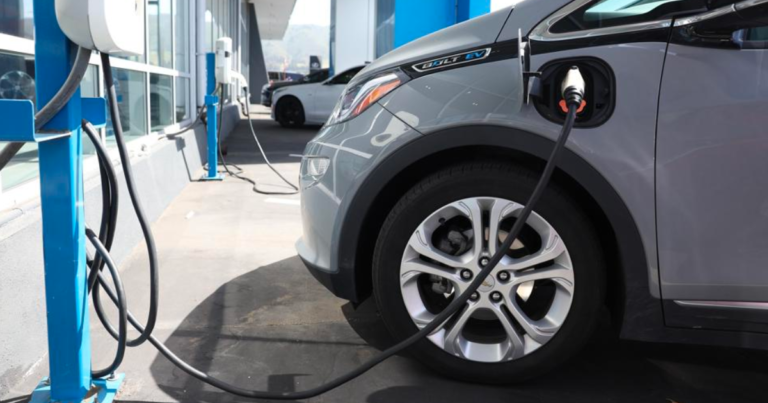Something shifted last month: Suddenly it wasn’t about which new electric vehicle was coming, but if buyers even wanted an EV. It seems the change stemmed from corporate decisions from major EV champions to slow down battery-powered production and temper expectations.
After years of pushing its “all in” on EV agenda, General Motors pumped the brakes—and hard. It started with a pause on the Chevy Bolt EV and EUV and then an unspecified delay on several EVs (Chevy Equinox and Silverado EVs and the GMC Sierra Denali EV). Honda pulled out of its EV collab with GM. This week Ford’s battery and EV plant plans have been scaled back.
More telling is the delay and price increase of a long-awaited $30,000 electric SUV from Chevy. Now its Equinox EV will start at $34,995—eventually. In the meantime a $48,995 front-wheel drive launch edition will be available in 2024. Even Tesla’s elusive Cybertruck keeps ratcheting up in expected starting price, with little hope for a realistically priced pickup. Ford’s F-150 Lightning debuted as a $40,000 pickup, but now Ford is focusing on a $70,000 Flash version.
At the Los Angeles Auto Show last week, the big EV reveal was a luxury SUV from Lucid. The CEO proudly announced the Gravity would start “under $80,000.” The average price of a new EV is about $50,000, a drop from 2022’s average but still higher than the average gas-powered new vehicle. Volkswagen’s upcoming ID.7 electric sedan was also on display with an expected $50,000 price tag. Other new EVs at the show included the Honda Prologue EV, expected to land just under $50,000.
/https://www.forbes.com/wheels/wp-content/uploads/2023/11/EVDemand_LucidGravity.png)
But Albert Gore, executive director at EV policy group Zero Emission Transportation Association (ZETA), doesn’t see these changes as an indication of plummeting demand. In a phone interview he said when looking over sales data he sees “a record year by a long shot for EV sales” with growth quarter over quarter. For the first time in 2023 there were over 1 million global EV sales. Year-over-year saw a 50% increase in EV sales. But we’ve become inured to EV increases, he said: “We’ve come to see that as normal.”
Gore is critical of why this shifting narrative around EVs is happening now as sales grow, demand increases and more EVs are available. Car companies struggling with EV production, such as GM, and others late to the full EV transition, namely Toyota, Subaru, Honda and Mazda, appear to be slowing down the very transition they once touted. In a business update with GM executives last month they called their EV plan a “measured rollout” that was delayed to match demand.
“Demand isn’t fading for [EVs], rather just growing a lot slower than many automakers likely had hoped for,” Robby DeGraff, analyst at AutoPacific said earlier this month.
/https://www.forbes.com/wheels/wp-content/uploads/2023/11/EVDemand_ChevyEquinoxEV.png)
That could be blamed on a supply issue, as battery reporting company Recurrent lead researcher Liz Najman noted in a recent phone call. She sees “a bit of a disconnect between what the average consumer is looking for and what’s available.” With delays and cancellations for less expensive EV models, there’s pent-up demand with nowhere to go. Younger shoppers want to spend less on a new car, especially on a first EV.
“Automakers need to continue to keep MSRPs and greedy dealer markups in check while prioritizing entry-level products regardless of powertrain,” DeGraff added.
Changing policy could also have an effect on end-of-the-year sales and demand. Come January, the federal clean car tax credit up to $7,500 will be available at the time of sale. This makes 2024 a more attractive time to buy an EV for qualified buyers: Instead of waiting until tax time to process the subsidy the credit will be available at purchase. Leasing an EV continues to be a smart way to circumvent some of the restrictions. But 2024 also brings new requirements for car manufacturers to qualify for the full EV credit amount.
Despite different factors, as ZETA’s Gore noted, the EV transition is happening. “It’s not taking its foot off the pedal, so to speak.”


